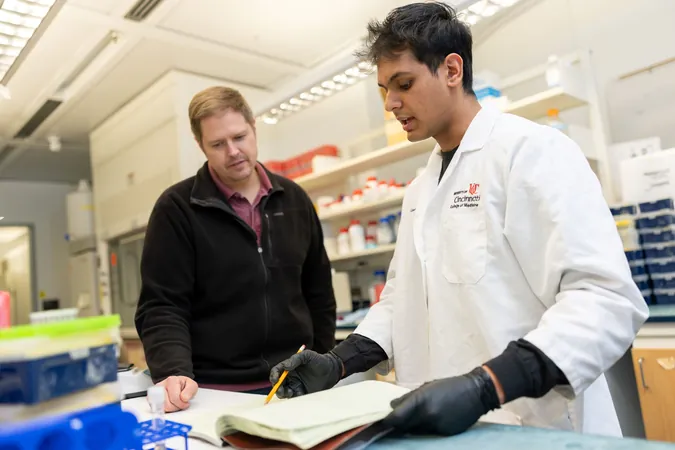
Unlocking the Universe: How COZMIC’s Milky Way Clones Are Decoding Dark Matter
2025-06-17
Author: Sarah
Revolutionizing Cosmic Research
Leading a groundbreaking exploration of the universe’s most elusive substance, dark matter, a team of scientists, including cosmologist Vera Gluscevic from USC, Ethan Nadler, and Andrew Benson from Carnegie Observatories, has launched an ambitious simulation initiative dubbed "COZMIC." This innovative project stands for "Cosmological Zoom-in Simulations with Initial Conditions beyond Cold Dark Matter," and it's set to change how we understand the birth and evolution of galaxies.
The team’s compelling findings were published on June 16 in The Astrophysical Journal, marking a milestone in cosmology.
The Enigma of Dark Matter
Dark matter, an invisible force holding galaxies together, has long puzzled scientists. Despite its intangible nature—failing to emit light or energy—dark matter's influence is evident in the way galaxies rotate. First suggested by Swiss scientist Fritz Zwicky in 1933, the concept of dark matter has grown, yet studying it remains a challenge. Recognizing its effects on cosmic structures resembles piecing together a puzzle using only someone’s shadow as a clue.
COZMIC: Pioneering New Physics
The team leveraged advanced physics principles, programming supercomputers to carry out meticulous cosmological simulations under the COZMIC project. Gluscevic states, "For the first time, we're able to model galaxies like ours using radically different physical laws, which we then compare with real astronomical observations." This powerful combination of theoretical physics and simulation promises to provide unprecedented insights into the universe.
Unveiling Dark Matter Scenarios
The COZMIC project analyzed different theories surrounding dark matter interactions: 1. **Billiard-Ball Model**: This scenario suggests that dark matter particles collide with protons, smoothing out small-scale structures and eliminating potential satellite galaxies within the Milky Way. 2. **Mixed-Sector Model**: A blend of interactions where some dark matter particles engage with normal matter, while others simply pass through it. 3. **Self-Interacting Model**: Here, dark matter interacts with itself through time, altering galaxy formation from the universe’s inception to the present.
Benson emphasizes the importance of these interactions, as COZMIC simulations are crafted to produce galactic structures mirroring the complex behaviors between dark and normal matter.
A Bright Future for Dark Matter Research
This groundbreaking research opens new avenues for understanding dark matter. By comparing simulated galaxies with real-world telescope images, the team aims to pinpoint which models closely resemble our universe. Gluscevic concludes, "For the first time, we can ask, 'Which version of the universe looks most like ours?'" Plans are underway to further validate their simulations against telescope data, bringing them closer than ever to comprehending the nature of dark matter and its influence on cosmic structures.
The potential for discoveries in this field is immense, and with COZMIC leading the charge, the secrets of the universe's dark code may soon be within reach.


 Brasil (PT)
Brasil (PT)
 Canada (EN)
Canada (EN)
 Chile (ES)
Chile (ES)
 Česko (CS)
Česko (CS)
 대한민국 (KO)
대한민국 (KO)
 España (ES)
España (ES)
 France (FR)
France (FR)
 Hong Kong (EN)
Hong Kong (EN)
 Italia (IT)
Italia (IT)
 日本 (JA)
日本 (JA)
 Magyarország (HU)
Magyarország (HU)
 Norge (NO)
Norge (NO)
 Polska (PL)
Polska (PL)
 Schweiz (DE)
Schweiz (DE)
 Singapore (EN)
Singapore (EN)
 Sverige (SV)
Sverige (SV)
 Suomi (FI)
Suomi (FI)
 Türkiye (TR)
Türkiye (TR)
 الإمارات العربية المتحدة (AR)
الإمارات العربية المتحدة (AR)